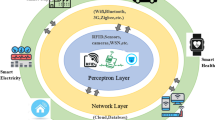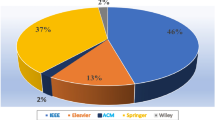Abstract
Failure recovery is an essential discussion in communication to guarantee the network's undisturbed and reliable service. Failed links have been affecting the communication network performance for various real-time applications for many years. Thus, it is necessary to address the issue, as it affects both users and service provider’s, leading to catastrophic collapse and cascading or interdependent failures. Therefore, designing a survivable network is the primary concern. Estimating and predicting network performance in advance for network survivability and traffic reachability is advantageous for network engineers. Therefore, in this paper, we analyze the network performance by failing and recovering network links for multiple time durations. The 6to4 tunneling network has been configured where two isolated IPv6 networks are connected through the tunnel's to the IPv4 backbone network, and we have failed the links that are connecting these networks. The 6to4 automatic and manual tunneling networks are defined separately. The network is simulated using Routing Information Protocol/Routing Information Protocol Next Generation and Open Shortest Path First/Open Shortest Path First version 3 for real-time voice and video streaming applications. The network's performance is calculated for links over each routing protocol and tunneling technique in these cases. Therefore, this analysis allows us the pre-computation of performance for failing the main link connecting the IPv6 networks to the IPv4 backbone network or vice-versa. The performance parameters studied and evaluated in this paper are network convergence, traffic dropped, throughput, queuing delay, and router performance. The different route table characteristics for Router A, Router C, and IPv4 backbone are also analyzed as links between them are failed and recovered multiple times. This novel analysis and discussion bring out a practical, realistic analysis of recovery and system vulnerability.
































Similar content being viewed by others
References
Ahmed, M. R. A., & Shaikhedris, S. S. A. Network Migration and Performance Analysis of IPv4 and IPv6. In 2020 International Conference on Computer, Control, Electrical, and Electronics Engineering (ICCCEEE) (pp. 1-6). IEEE.
Ashraf, M. W., Idrus, S. M., Iqbal, F., Butt, R. A., & Faheem, M. (2018). Disaster-resilient optical network survivability: A comprehensive survey. Photonics, 5(4), 35.
Bhor, M., & Karia, D. (2017). Network recovery using IP fast rerouting for multi link failures. In 2017 International Conference on Intelligent Computing and Control (I2C2) (pp. 1–5). IEEE.
Boansi, O. K., & Asante, M. (2020). A Comparative Performance Analysis of 6to4 Transition Mechanism over MPLS and Frame Relay using OPNET. International Journal of Computer Applications, 975, 8887.
Carpenter, B., & Moore, K. (2001). Connection of IPv6 domains via IPv4 clouds. RFC 3056.
Chu, C. Y., Xi, K., Luo, M., & Chao, H. J. (2015). Congestion-aware single link failure recovery in hybrid SDN networks. In 2015 IEEE Conference on Computer Communications (INFOCOM) (pp. 1086–1094). IEEE.
Colitti, L., Di Battista, G., & Patrignani, M. (2004). IPv6-in-IPv4 tunnel discovery: methods and experimental results. IEEE Transactions on Network and Service Management, 1(1), 30–38.
Coltun, R., Ferguson, D., Moy, J., & Lindem, A. (2008). Rfc 5340, OSPF for IPv6, IETF, vol. 24.
Doering, G., SpaceNet, A. G., Kumari, W., Huston, G., & Liu, W. (2021). IPv6 operations working group (v6ops) F. Gont internet-draft SI6 networks intended status: informational N. Hilliard Expires: December 13, 2021 INEX.
Edition, O. M. A. (2018) Riverbed technology, Inc. http://www.riverbed.com
Filsfils, C., Previdi, S. B., Scudder, J. G., Ward, D. D., Vasseur, J. P., & Guichard, J. (2009). Fast reroute (FRR) protection at the edge of a RFC 2547 network. Google Patents.
Fiţigău, I., & Toderean, G. (2013). Network performance evaluation for RIP, OSPF and EIGRP routing protocols. In Proceedings of the International Conference on Electronics, Computers and Artificial Intelligence-(ECAI), 2013 (pp. 1–4). IEEE.
Gupta, S., Gandhar, A., & Gandhar, S. (2020). Performance analysis of IEC 61850-9-2 process-bus based redundant substation automation system architecture. Journal of Information and Optimization Sciences, 41(1), 13–23.
Gupta, S., & Khaitan, V. (2021). Reliability and survivability analysis of long-term evolution vehicular ad-hoc networks: an analytical approach. Journal of Network and Systems Management, 29(2), 11.
Hamarsheh, A., Abdalaziz, Y., & Nashwan, S. (2021). Recent Impediments in Deploying IPv6.
Hossain, M. A., Ali, M. M., Akter, M. S., & Sajib, M. S. A. (2020). Performance comparison of EIGRP, OSPF and RIP Routing protocols using cisco packet tracer and OPNET simulator. Global Journal of Computer Science and Technology.
Jain, N., & Payal, A. (2019). Comparison between IPv4 and IPv6 using OSPF and OSPFv3 on riverbed modeler. In 2019 IEEE International Conference on Advanced Networks and Telecommunications Systems (ANTS) (pp. 1–7). IEEE.
Jain, N., & Payal, A. (2020). Performance evaluation of IPv6 network for real-time applications using IS-ISv6 Routing protocol on riverbed modeler. Procedia Computer Science, 173, 46–55.
Jain, N., Payal, A., & Jain, A. (2021). Performance analysis of routing protocols on IPv4 and IPv6 addressing networks. Journal of Web Engineering, 20(5), 1327–1366.
Jing, K., Du, X., Shen, L., & Tang, L. (2019). Robustness of complex networks: Cascading failure mechanism by considering the characteristics of time delay and recovery strategy. Physica a: Statistical Mechanics and Its Applications, 534, 122061.
Kini, S., Ramasubramanian, S., Kvalbein, A., & Hansen, A. F. (2010). Fast recovery from dual-link or single-node failures in IP networks using tunneling. IEEE/ACM Transactions on Networking, 18(6), 1988–1999.
Lee, Y. O., & Narasimha Reddy, A. L. (2012). Constructing disjoint paths for failure recovery and multipath routing. Computer Networks, 56(2), 719–730.
Li, Q., Liu, Y., Zhu, Z., Li, H., & Jiang, Y. (2019). BOND: Flexible failure recovery in software defined networks. Computer Networks, 149, 1–12.
Mahmood, Z., Anam, W., Iftikhar, W., & Aziz, H. I. T. (2020). Performance evaluation of dynamic routing protocols. LGURJCSIT, 4(1), 21–32.
Martinez, J. P., Mishra, G., Xie, C. (2021) V6OPS G. Fioccola Internet-Draft P. Volpato Intended status: Informational Huawei Technologies Expires: December 3, 2021 N. Elkins Inside Products
Megahed, M. H., Makrakis, D., & Ying, B. (2011). SurvSec: A new security architecture for reliable network recovery from Base Station failure of surveillance WSN. Procedia Computer Science, 5, 141–148.
Meng, K., Qian, X., Lou, P., & Zhang, J. (2020). Smart recovery decision-making of used industrial equipment for sustainable manufacturing: belt lifter case study. Journal of Intelligent Manufacturing, 31(1), 183–197.
Mohammad, Z., Abusukhon, A., & Al-Maitah, M. A. (2017). A comparative performance analysis of route redistribution among three different routing protocols based on opnet simulation. International Journal of Computer Networks and Communications, 9(2), 39–55.
Mohan, N., Wason, A., & Sandhu, P. S. (2016). ACO based single link failure recovery in all optical networks. Optik (stuttg), 127(20), 8469–8474.
Ochoa, G., Chicano, F., Tinós, R., & Whitley, D. (2015, July). Tunnelling crossover networks. In Proceedings of the 2015 Annual Conference on Genetic and Evolutionary Computation (pp. 449-456).
Oztemel, E., & Gursev, S. (2020). Literature review of Industry 4.0 and related technologies. Journal of Intelligent Manufacturing, 31(1), 127–182.
Papán, J., Segeč, P., Moravčík, M., Hrabovský, J., Mikuš, Ľ., & Uramova, J. (2017). Existing mechanisms of IP fast reroute. In 2017 15th International Conference on Emerging eLearning Technologies and Applications (ICETA) (pp. 1–7). IEEE.
Rai, S., Song, L., Cavdar, C., Andrei, D., & Mukherjee, B. (2008). A novel approach to provision differentiated services in survivable IP-over-WDM networks. Optical Switching and Networking, 5(2–3), 170–176.
Raj, A., & Ibe, O. C. (2007). A survey of IP and multiprotocol label switching fast reroute schemes. Computer Networks, 51(8), 1882–1907.
Riaz, S., et al. (2018). FRP: A novel fast rerouting protocol with multi-link-failure recovery for mission-critical WSN. Future Generation Computer Systems, 89, 148–165.
Sasithong, P., Saengudomlert, P., Vanichchanunt, P., Hai, N. H., & Wuttisittikulkij, L. (2020). Maximizing double-link failure recovery of over-dimensioned optical mesh networks. Optical Switching and Networking, 36, 100541.
Shekhtman, L. M., Danziger, M. M., & Havlin, S. (2016). Recent advances on failure and recovery in networks of networks. Chaos, Solitons and Fractals, 90, 28–36.
Sun, H., Han, J. J., & Levendel, H. (2003). Prioritized failure recovery in communication networks and its transient analysis. Computer Communications, 26(9), 939–949.
Sundarrajan, A., & Ramasubramanian, S. (2015). Fast reroute from single link and single node failures for IP multicast. Computer Networks, 82, 20–33.
Tadayoni, R., & Henten, A. (2016). From IPv4 to IPv6: lost in translation? Telematics and Informatics, 33(2), 650–659.
Thorat, P., Jeon, S., & Choo, H. (2017). Enhanced local detouring mechanisms for rapid and lightweight failure recovery in OpenFlow networks. Computer Communications, 108, 78–93.
Thorenoor, S. G. (2010). Dynamic routing protocol implementation decision between EIGRP, OSPF and RIP based on technical background using OPNET modeler. In 2010 Second International Conference on Computer and Network Technology (pp. 191-195). IEEE.
Tseng, P. K., & Chung, W. H. (2012). Joint coverage and link utilization for fast IP local protection. Computer Networks, 56(15), 3385–3400.
Vodnala, D., Phani Kumar, S., & Aluvala, S. (2017). An efficient on-demand link failure local recovery multicast routing protocol. Advances in Intelligent Systems and Computing, 467, 603–616.
Wang, X., & Zhao, X. (2020). Real-time probabilistic root cause correlation of network failures. Google Patents.
Whitfield, R., & Zhu, S. Y. (2015). A comparison of OSPFv3 and EIGRPv6 in a small IPv6 enterprise network. International Journal of Advanced Computer Science and Applications. https://doi.org/10.14569/IJACSA.2015.060123
Yadav, D. S., Babu, S., & Manoj, B. S. (2018). Quasi Path Restoration: A post-failure recovery scheme over pre-allocated backup resource for elastic optical networks. Optical Fiber Technology, 41, 139–154.
Zangiabady, M., & Mirzaei, M. S. (2012). Novel method for fast IP network recovery. In 2012 IEEE Students' Conference on Electrical, Electronics and Computer Science (pp. 1–4). IEEE.
Acknowledgements
This work is supported by the Guru Gobind Singh Indraprastha University, New Delhi, India, under the Indraprastha research Fellowship No.182.
Author information
Authors and Affiliations
Corresponding author
Additional information
Publisher's Note
Springer Nature remains neutral with regard to jurisdictional claims in published maps and institutional affiliations.
Rights and permissions
About this article
Cite this article
Jain, N., Payal, A. & Jain, A. Analysis of link failures and recoveries on 6to4 tunneling network with different routing protocol. J Intell Manuf 34, 1037–1063 (2023). https://doi.org/10.1007/s10845-021-01835-7
Received:
Accepted:
Published:
Issue Date:
DOI: https://doi.org/10.1007/s10845-021-01835-7




